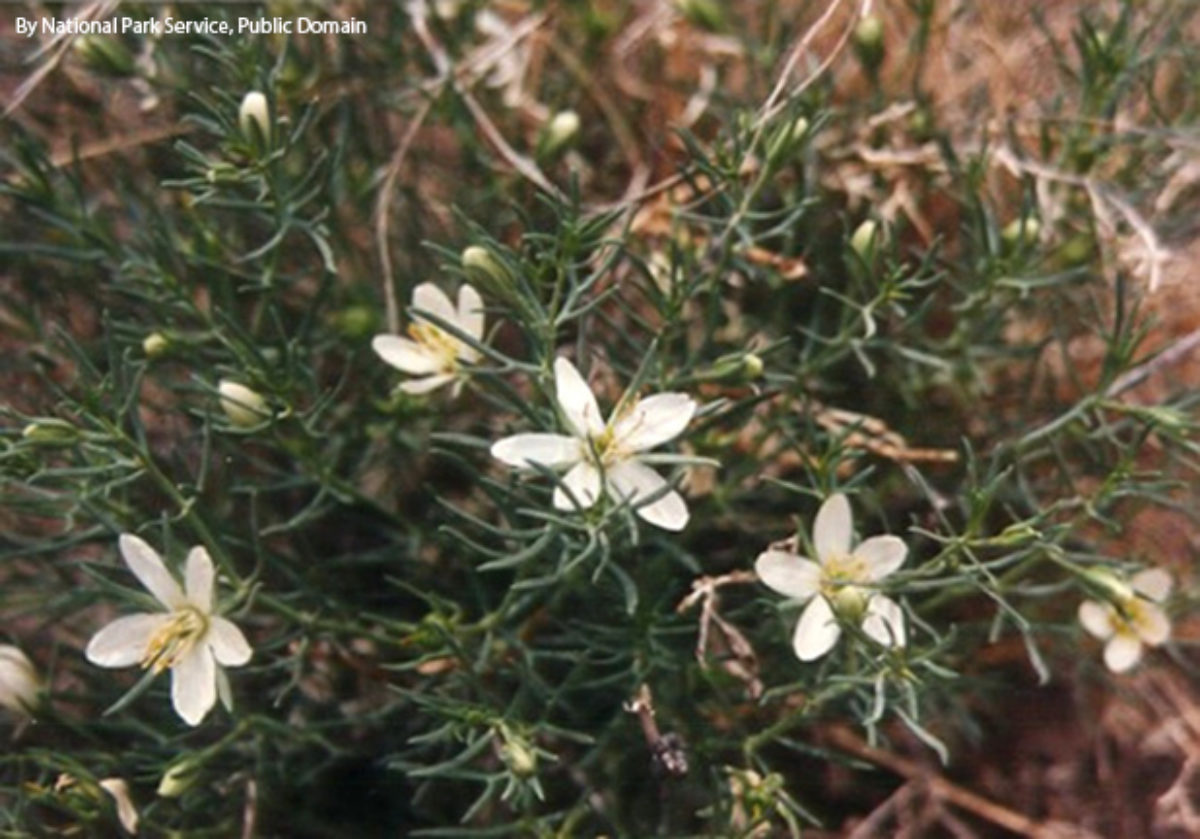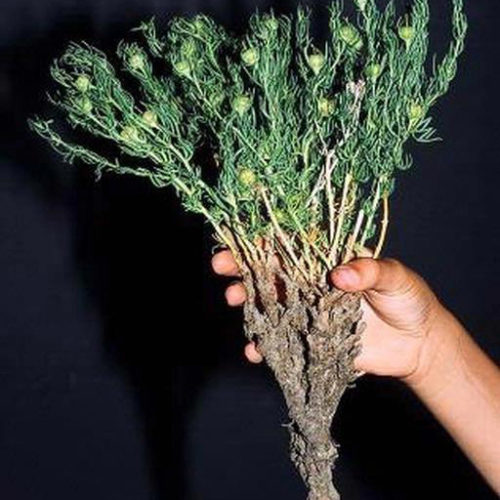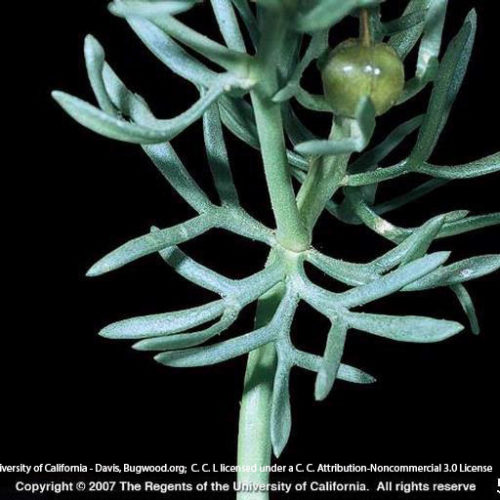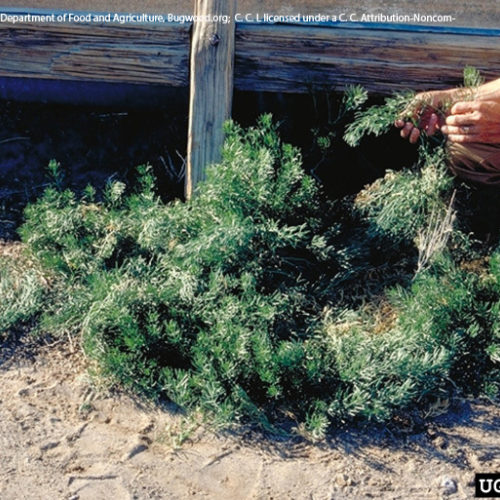African rue
Peganum harmala

Family: Nitrariaceae
Other Common Names: harmal, wild rue, Syrian rue
Weed class: monitor list
Year Listed: 2017
Native to: parts of Africa, Asia, and Europe
Is this Weed Toxic?:
humans, livestock
Why Is It a Noxious Weed?
This plant is on the monitor list - it is not a listed noxious weed in Washington. There are no known populations of African rue in Washington at this time. Please contact its sponsor Greg Haubrich (ghaubrich@agr.wa.gov) to report locations or for more information.
How would I identify it?
General Description
This herbaceous perennial grows from a deep taproot. Plants are bright green and can have a whitish-bluish hue. Leaves are alternate, narrow and lobed. Plants have single white flowers that form small capsules with many seeds.
Flower Description
Solitary white flowers grow on short stems (1-2 cm) from leaf axils (where the leaf meets the stem). Each flower has 5 narrow, green sepals, 5 white petals, and 15 stamens.
Leaf description
The leaves are alternately arranged and irregularly divided into narrow, smooth lobes. Leaves have an unpleasant odor when crushed.
Stem description
Stems are highly branched, giving the appearance of a small shrub, but die back each year.
Fruit Seed Description
Flowers form leathery capsules, each with three chambers that contain 45-60 dark brown seeds.
Where does it grow?
African rue can grow in dry conditions, even semi-desert to desert habitats. It can grow in a variety of soils, tolerating alkaline and saline soils. Noted areas it could be found include: disturbed sites such as roadsides, fields, and into rangelands.
How Does it Reproduce?
Plants spread by seed and also by new shoots forming on lateral roots and root fragments.
How Do I Control It?
Please refer to the PNW Weed Management Handbook, or contact your county noxious weed coordinator.
For More Information
Field Guide for Managing African Rue in the Southwest by the USDA Forest Service
Oregon Department of Agriculture







